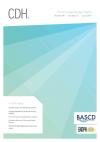Community Dental Health

- Cover Date:
- June 2017
- Print ISSN:
- 0265 539X
- Vol:
- 34
- Issue:
- 2
Dental caries experience, rather than toothbrushing, influences the incidence of dental caries in young Japanese adults
A dose–response relationship between toothbrushing frequency and the incidence of dental caries has not been confirmed. Furthermore, no longitudinal study about this relationship has considered dental caries experience at baseline, which is an important factor influencing the frequency of future caries. Objective: To elucidate the association between the incidence of dental caries and toothbrushing frequency after adjusting for dental caries experience at baseline in a Japanese population. Basic research design: The 92 recruits of the Japan Maritime Self-Defense Force in Kure, Japan, in 2011 were followed up for 3 years. They underwent oral examination at the annual checkups and answered questions about toothbrushing frequency. Main outcome measures: The multiple logistic regression analysis was used to analyze the incidence of dental caries and to identify independent effects of toothbrushing frequency and dental caries experience at baseline. Furthermore, the relative importance of the incidence of dental caries was investigated among other independent variables using the partial adjusted R2 score. Results: Logistic regression analysis showed that toothbrushing frequency alone did not influence the
increment in decayed, missing, and filled teeth (DMFT). However, DMFT at baseline alone was associated with the increment in DMFT (crude odds ratio, OR, 1.20, 95% confidence interval, CI, 1.08,1.33). In the fully adjusted model, only DMFT at baseline was associated with the increment in DMFT (adjusted OR 1.23, 95%CI 1.09,1.38). Conclusion: After three years, the incidence of dental caries in young adult Japanese males was influenced by DMFT at baseline, rather than toothbrushing frequency.
Key words: public dental health, epidemiology, toothbrushing, DMFT, risk factors, males, Japan
doi:10.1922/CDH_4073Sonoda04
- Article Price
- £15.00
- Institution Article Price
- £
- Page Start
- 118
- Page End
- 121
- Authors
- C. Sonoda, M. Ebisawa, H. Nakashima, Y. Sakurai
Articles from this issue
- Title
- Pg. Start
- Pg. End
- Communities in action: developing a dental ambassador training programme for adults with learning disability
- 77
- 79
- Public health intervention over four decades for the children in the Australian Capital Territory: Have we reached the point of diminishing returns?
- 84
- 87
- Relationship between mental health risk factors and oral symptoms in adolescents: Korea Youth Risk Behavior Webbased Survey, 2013
- 88
- 92
- PeP-SCOT a health coaching intervention for people in prisons: the development of the intervention protocol
- 97
- 101
- Productive efficiency and its determinants in the Community Dental Service in the north-west of England
- 102
- 106
- Socio-demographic and area-related factors associated with the prevalence of caries among preschool children in Greece.
- 112
- 117
- Dental caries experience, rather than toothbrushing, influences the incidence of dental caries in young Japanese adults
- 118
- 121
